Today I visited one of the most amazing museums I have ever seen in my life. I spent a few hours there, admiring the exhibits. This is the Geological Museum in Warsaw. It is located in the Mokotów district, at 4 Rakowiecka Street. It's close to the center, you can easily get here by metro. We get off at the Pole Mokotowskie metro station, walk a few hundred meters along Rakowiecka Street and we are there. Entry to the museum is free.
Odwiedziłam dzisiaj jedno z najbardziej niesamowitych muzeów, jakie widziałam w swoim życiu. Spędziłam tam kilka godzin zachwycając się eksponatami. To Muzeum Geologiczne w Warszawie. Mieści się ono w dzielnicy Mokotów, przy ul. Rakowieckiej 4. To blisko centrum, można tu łatwo dojechać metrem. Wysiadamy na stacji metro Pole Mokotowskie, idziemy kilkaset metrów ul. Rakowiecką i jesteśmy na miejscu. Wejście do muzeum jest za darmo.
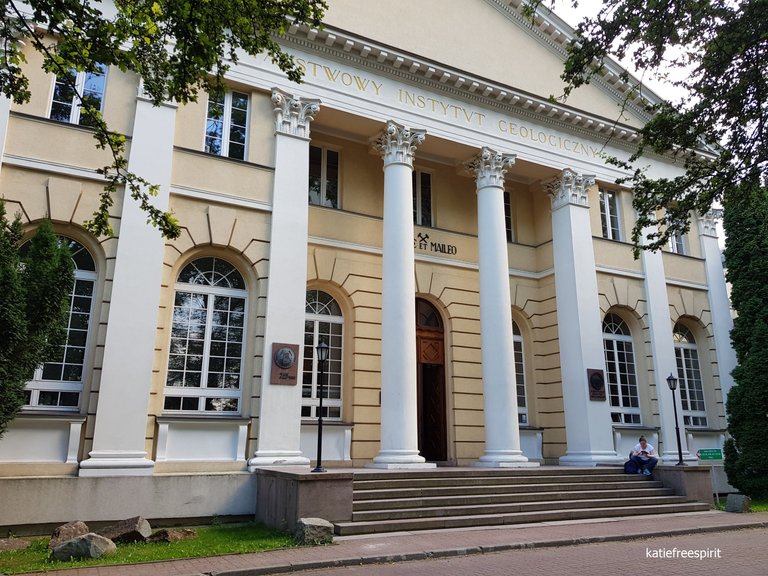
Being in the museum, I felt as if I had entered another world. Today I am going to show you the skeletons of the woolly mammoth and two other extinct animals in the museum - the woolly rhinoceros and the cave bear. I have never had the opportunity to see these animals live, and thanks to the work of geologists, I could somehow feel what it was like to stand next to such a huge wild animal that once lived on Earth.
Będąc w muzeum czułam się, jakbym trafiła do innego świata. Pokażę wam dzisiaj znajdujące się w muzeum szkielety mamuta włochatego oraz dwóch innych zwierząt, które wyginęły - nosorożca włochatego i niedźwiedzia jaskiniowego. Tych zwierząt nigdy nie miałam okazji zobaczyć na żywo, a dzięki pracy geologów mogłam w jakiś sposób poczuć jak to jest stać obok takiego ogromnego dzikiego zwierzęcia, które kiedyś żyło na Ziemii.
The mammoth tusks were amazing. Huge! Looking like deer antlers enlarged several times. Their thickness and size made a great impression!
Niesamowite były kły mamuta. Przeogromne! Wyglądające jak poroże jelenia powiększone kilkukrotnie. Ich grubość i wielkośc robiły duże wrażenie!
The bone elements in the reconstruction of the woolly mammoth skeleton found in the museum come from excavations in Pyskowice near Gliwice, Poland.
Elementy kostne w rekonstrukcji szkieletu mamuta włochatego znajdujące się w muzeum pochodzą z wykopalisk w Pyskowicach koło Gliwic
The great mammoth, the woolly mammoth, lived in the Pleistocene from about 2 million to about 10,000. years ago, during huge ice ages covering huge areas of the globe. The mammoth was one of the largest mammals on the globe. It was 3-4 meters tall and weighing 5 tons. The mammoth's body was covered with thick red or red-brown fur. The skin was lined with an 8 cm thick layer of fat, which, combined with the thick fur, perfectly protected the animal from frost. In order to survive the long, severe winter, the animal accumulated food in the summer in a layer of fat on its back or head.
Source: Plaque in the museum.
Mamut wielki, mamut włochaty żył w plejstocenie od około 2 mln do około 10 tyś. lat temu, w czasie ogromnych zlodowaceń obejmujących ogromne obszary globu. Mamut był jednym z największych ssaków globu. Osiągał 3-4 metry wysokości, przy wadze 5 ton. Ciało mamuta pokrywało gęste rude lub rudobrązowe futro. Skórę podścielała 8 cm warstwa tłuszczu, co w połączeniu z grubym futrem doskonale chroniła zwierzę przed mrozem. Żeby przetrwać długotrwałą, surową zimę zwierzę gromadziło latem pożywienie w warstwie tłuszczu na grzbiecie lub na głowie.
Źródło: Tabliczka w muzeum.
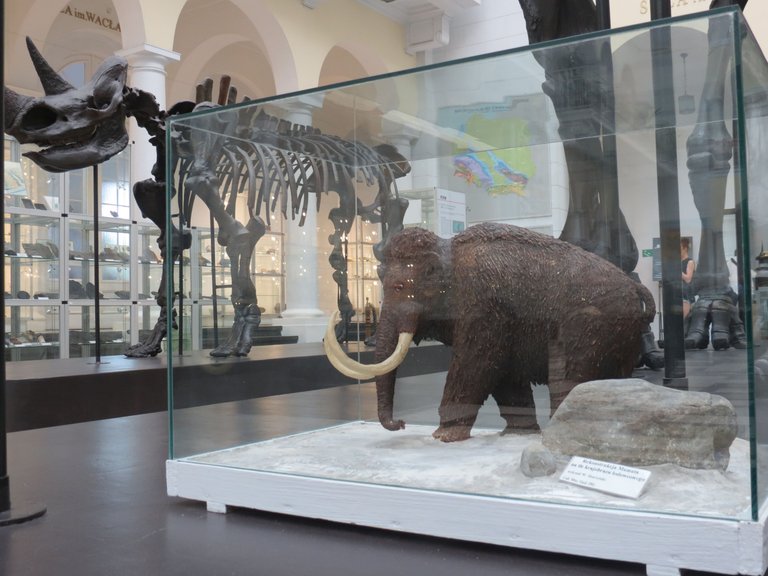
Another interesting animal whose skeleton could be seen in the museum was the woolly rhinoceros. As you can see, the animals of the old days were much more hairy than those of today. I associate the rhinoceros with an animal that has no fur, only smooth skin, and here you are ... a hairy rhino.
Kolejnym ciekawym zwierzęciem, którego szkielet można było zobaczyć w muzeum był nosorożec włochaty. Jak widać zwierzaki żyjące w dawnych czasach były dużo bardziej owłosione niż te obecnie. Nosorożec kojarzy mi się ze zwierzakiem, który nie ma futra, tylko gładką skórę, a tu proszę... włochaty nosorożec.

It's his skeleton. It was created in the process of reconstruction from bones found in Pyskowice near Gliwice, Poland, which could have come from several animals.
To jego szkielet. Powstał w procesie rekonstrukcji z kości znalezionych w Pyskowicach koło Gliwic, które mogły pochodzić od kilku zwierząt.
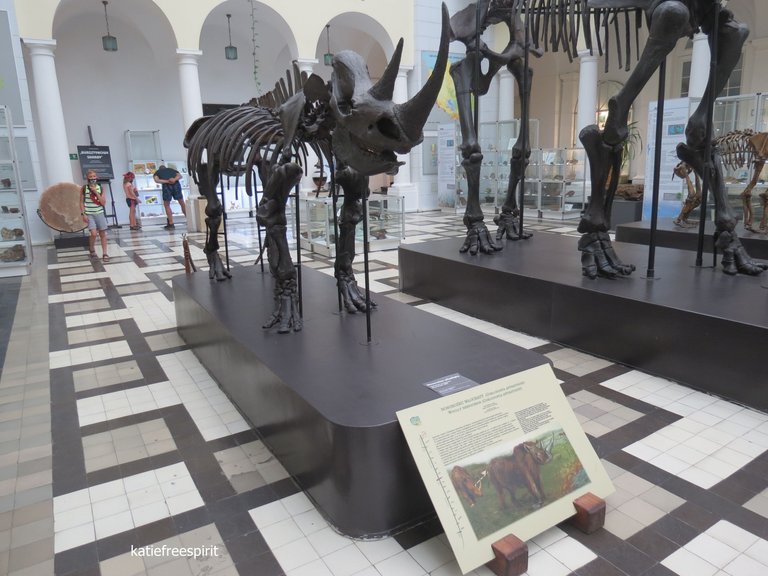
The woolly rhinoceros lived in the Ice Age and, like the mammoth, it became extinct about 10 thousand years ago. It was a large animal, reaching 3.5 meters in length and weighed about 3.5 tons. It probably had a long mane on its back along its entire length. He usually moved with his head tilted towards the ground.
Source: Plaque in the museum.
Nosorożec włochaty żył w epoce lodowcowej i podobnie jak mamut wyginął ok. 10 tyś lat temu. Był dużym zwierzęciem,osiągał 3,5 metra długości i ważył około 3,5 tony. Na grzbiecie wzdłuż całej długości ciała prawdopodobnie posiadał długą grzywę. Poruszał sie zwykle z głową nisko pochyloną ku ziemi.
Źródło: Tabliczka w muzeum.
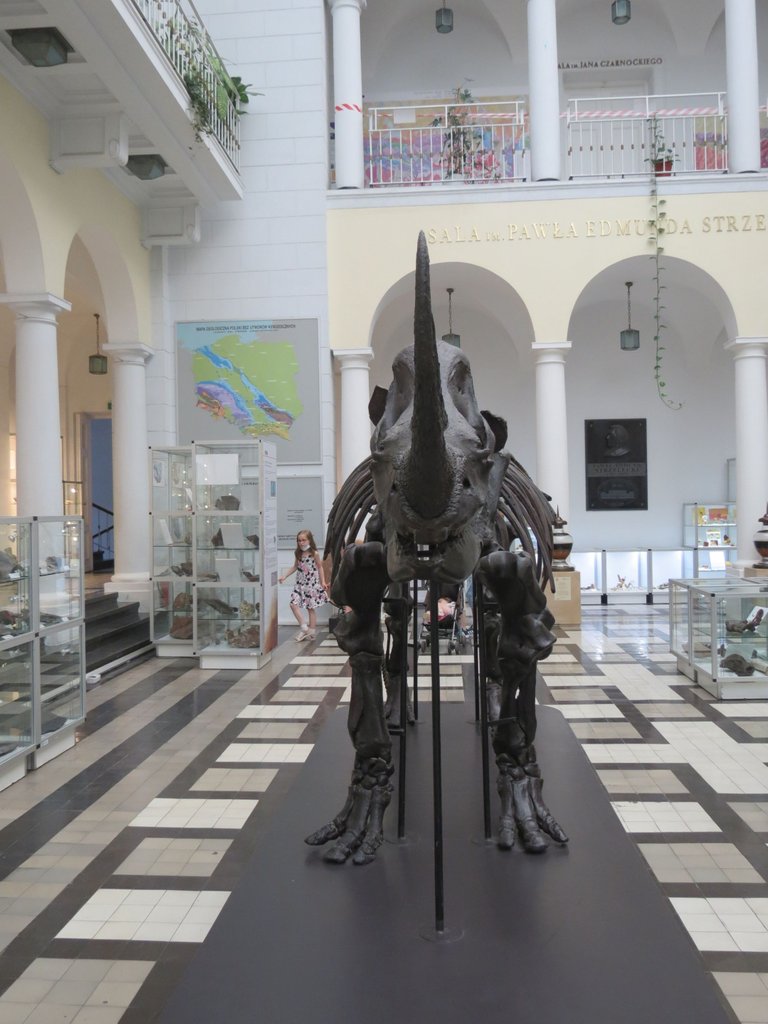
The last animal I want to write to you about was the cave bear. His skeleton reminds me of a very dangerous animal. And this is how it was presented on the plate next to the exhibit. As a bear attacking cavemen.
Ostatnim zwierzęciem o którym chcę wam napisać był niedźwiedź jaskiniowy. Jego szkielet przypomina mi bardzo niebezpieczne zwierzę. I tak też został przedstawiony na tabliczce przy eksponacie. Jako niedźwiedź atakujący jaskiniowców.
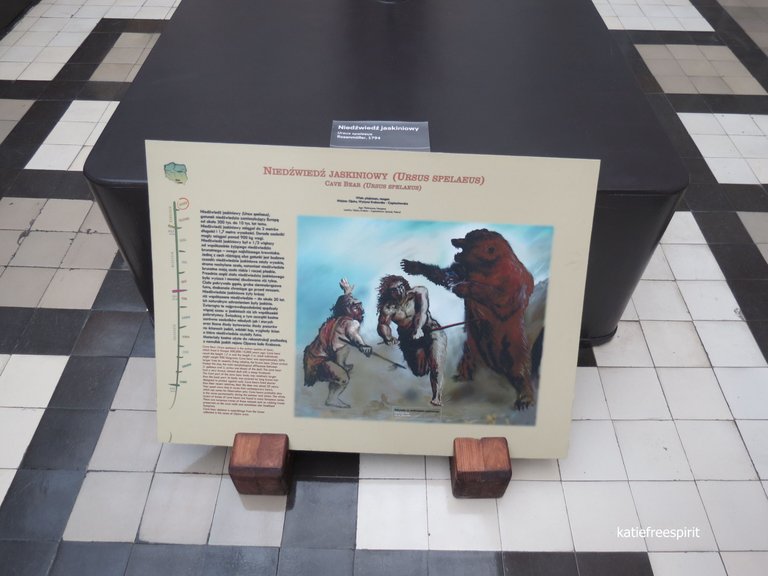
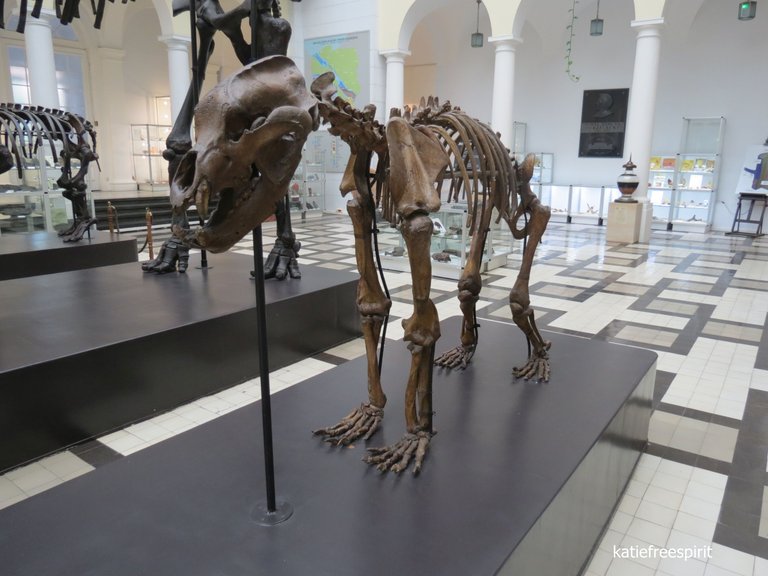
The cave bear was approx. 3 times larger than the modern bear. It also had a different skull structure from its modern relatives. His body was covered with thick, dark brown fur, and caves were his natural habitat.
Source: Plaque in the museum.
Niedźwiedź jaskiniowy był ok. 3 razy większy od współczesnych niedźwiedzi. Miał też inną budowę czaszki od swoich współczesnych krewnych. Jego ciało pokrywało gęste, ciemnobrązowe futro, a jego naturalnym schronieniem były jaskinie.
Źródło: Tabliczka w muzeum.
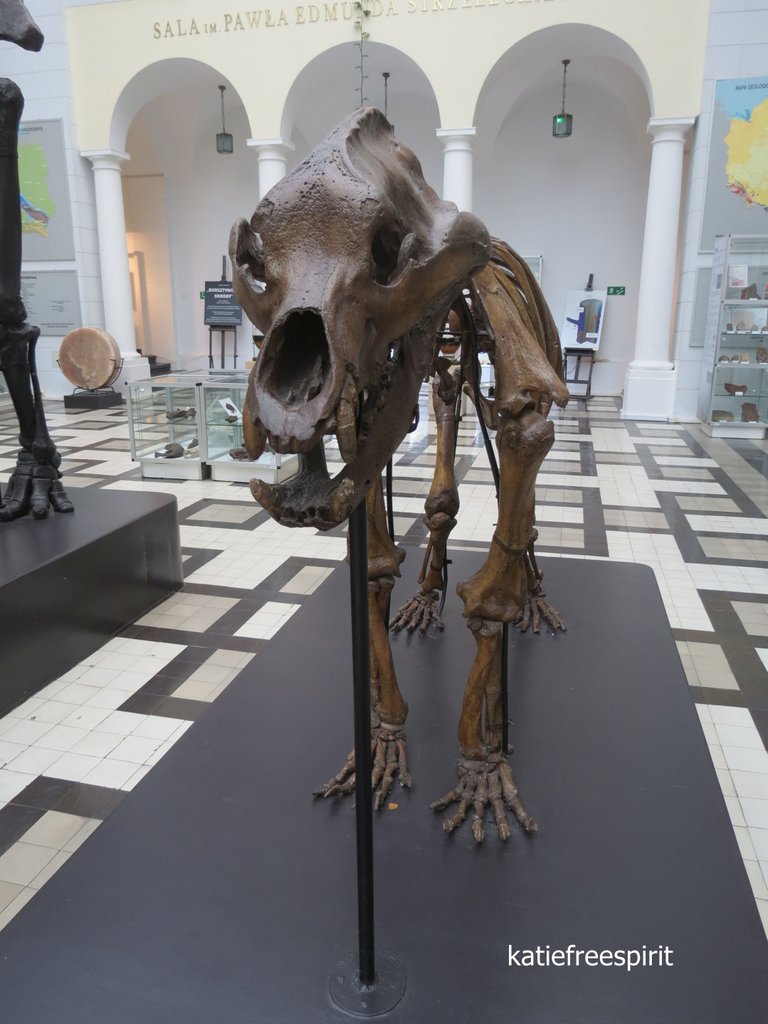
Additional parts of the bodies of animals living in the Ice Age could be seen in the display cases next to the skeletons, including elements of their teeth and various small bones.
W gablotach znajdujących się przy szkieletach można było zobaczyć dodatkowe części ciała zwierząt żyjących w epoce lodowcowej, m.in. elementy ich uzębienia oraz różne małe kości.
This is a picture of a woolly rhinoceros. What a cool pet! :) It looks a bit like a rock star with a red-dyed hair ;)
To zdjęcie nosorożca włochatego. Ale fajny zwierzak! :) Wygląda trochę jak gwiazda rocka z ufarbowaną na czerwono czupryną ;)
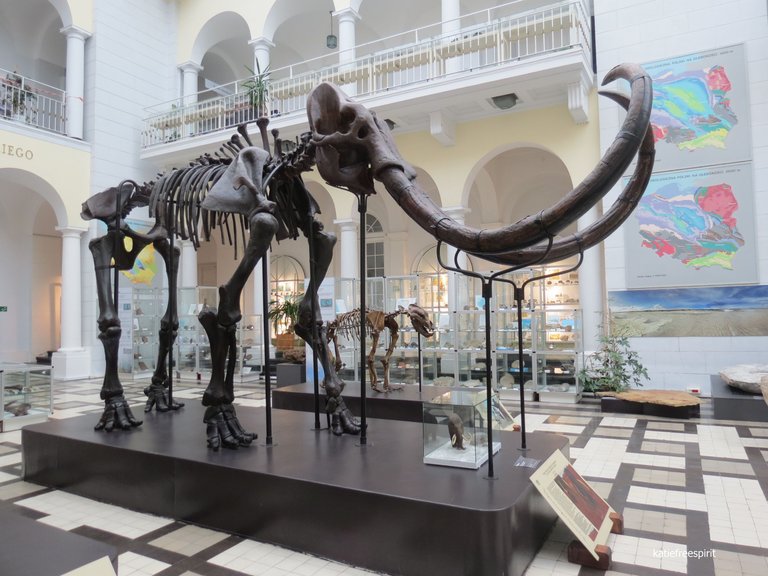
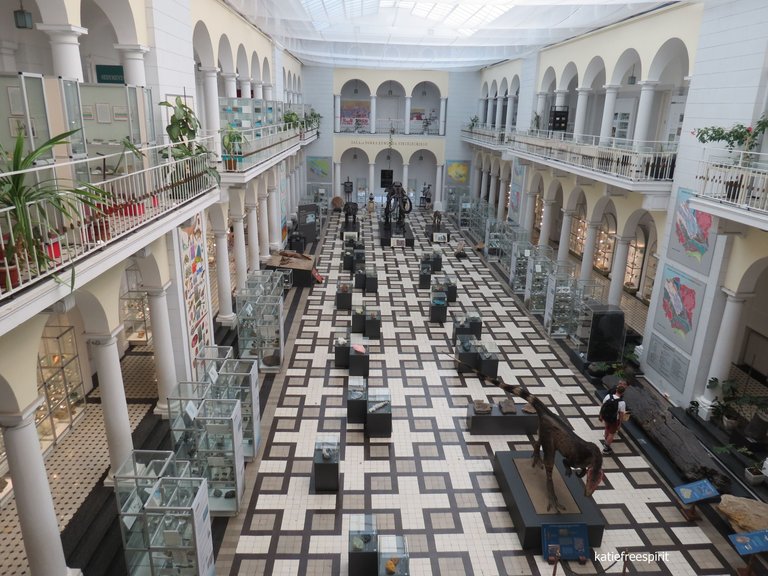
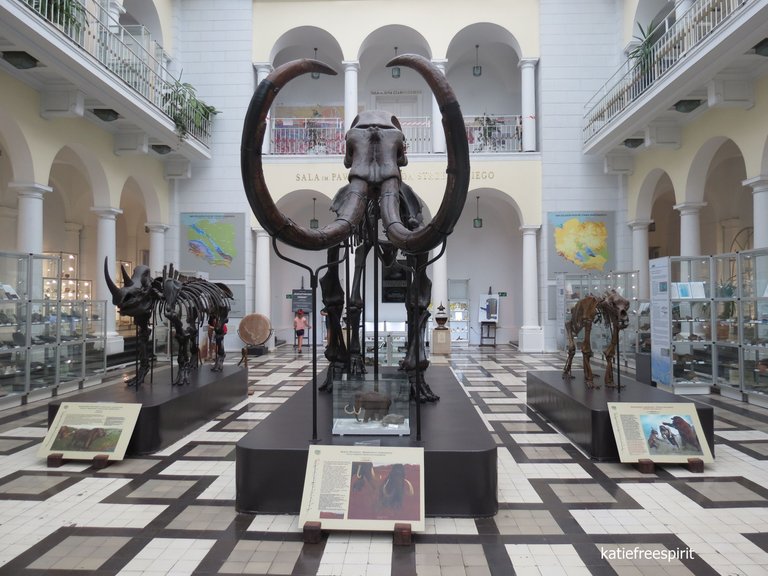

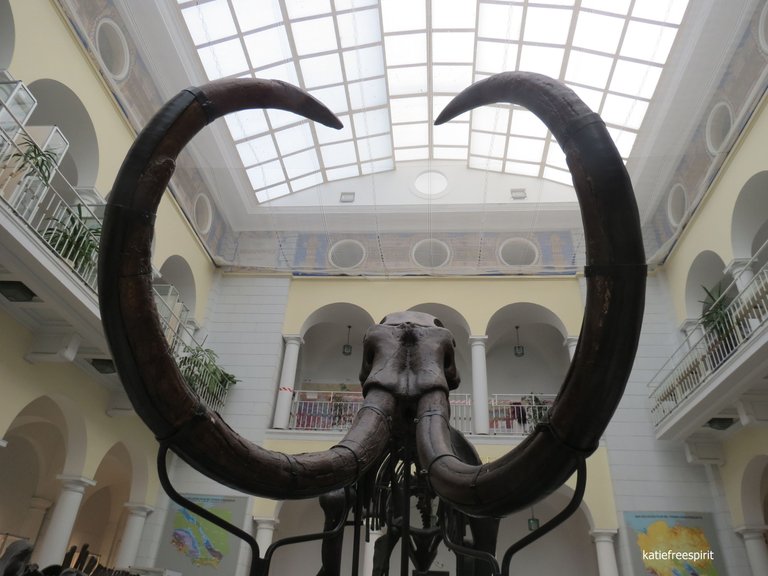
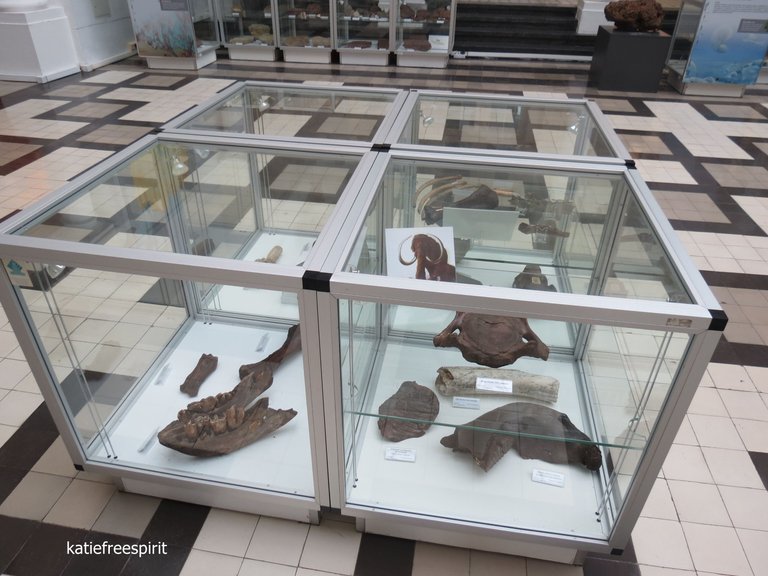
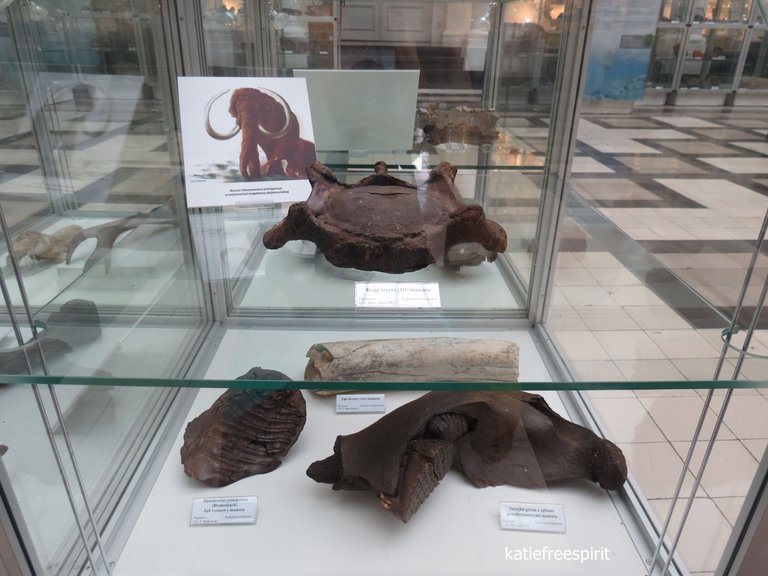
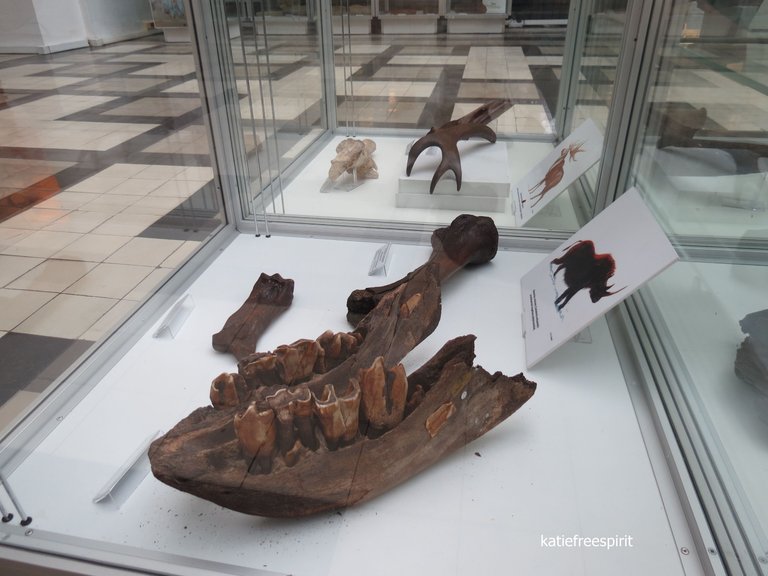
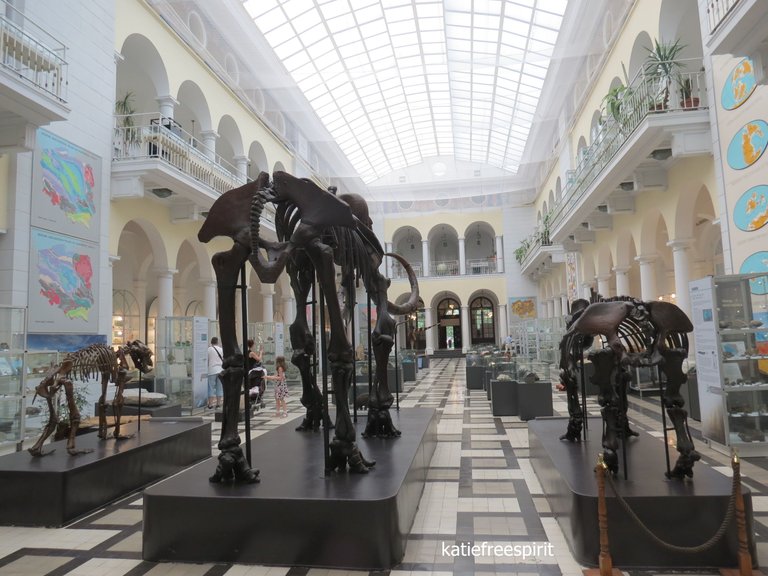
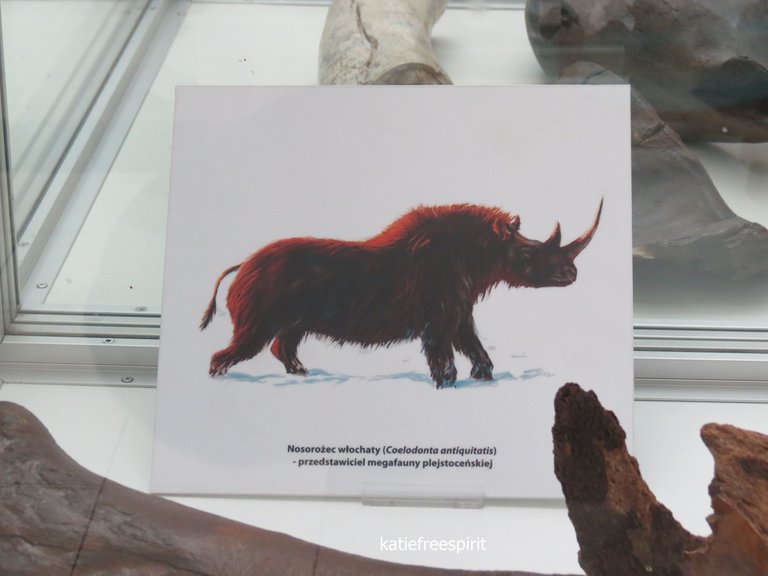
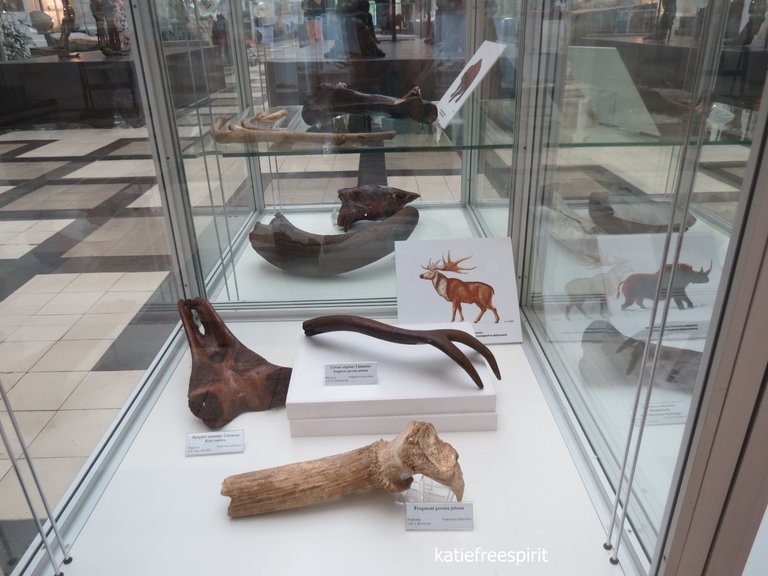

Hiya, @LivingUKTaiwan here, just swinging by to let you know that this post made it into our Honorable Mentions in Daily Travel Digest #1254.
Your post has been manually curated by the @pinmapple team. If you like what we're doing, please drop by to check out all the rest of today's great posts and consider supporting other authors like yourself and us so we can keep the project going!
Become part of our travel community:
Thank you @LivingUKTaiwan for highlighting my post 😊🦖
The rewards earned on this comment will go directly to the person sharing the post on Twitter as long as they are registered with @poshtoken.
Congratulations, your post has been added to Pinmapple! 🎉🥳🍍
Did you know you have your own profile map?
And every post has their own map too!
Want to have your post on the map too?
Very interesting, thanks
I'm glad you liked my post @lxsxl 😊